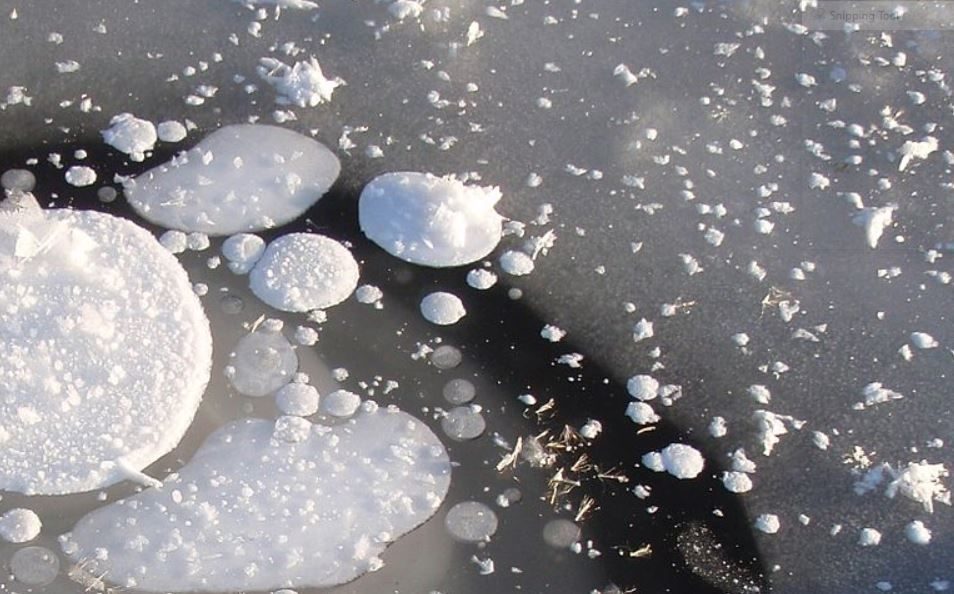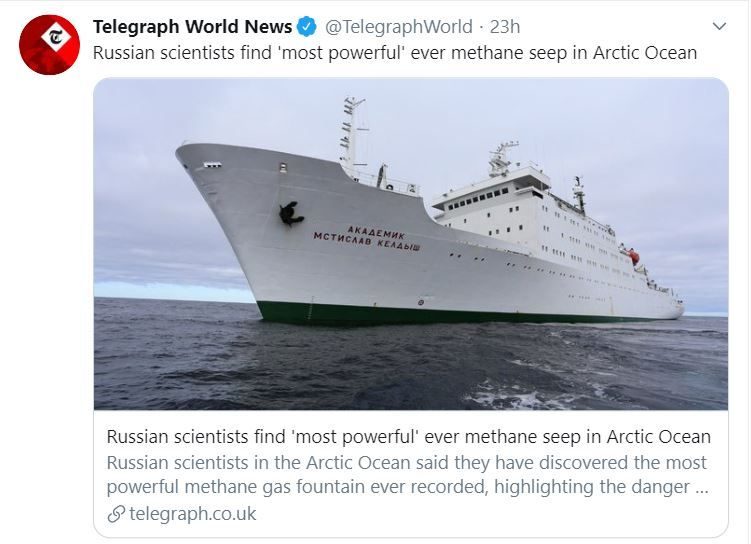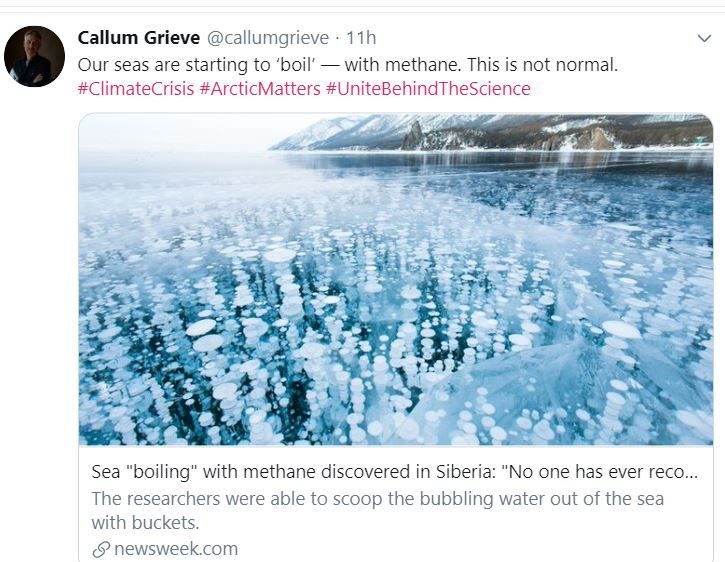Scientists studying the consequences of methane emissions from underwater permafrost in the Arctic Ocean
announced this week that they found a 50-square-foot area of the East Siberian Sea "boiling with methane bubbles."

© US Geological SurveyFrozen methane bubbles.
The research team, led by Igor Semiletov, from Tomsk Polytechnic University (TPU) found the methane leak east of Bennett Island in the East Siberian Sea. The methane bubbles, which create a boiling appearance on the surface of the water, spanned an area over 50 feet. The bubbles were so pronounced they could be scooped up in buskets.
"This is the most powerful seep I've ever seen. It is manifested by an increase in methane concentration in the air up to 16 ppm (millionths of a share), which is 9 times more than the average planetary values. No one has ever registered this before," said Semiletov in a
TPU statement.Semiletov, a Russian researcher who has participated in 45 Arctic expeditions, set out on the Academic Mstislav Keldysh last month, accompanied by an international group of scientists representing the United Kingdom, the United States, Italy, the Netherlands, and Sweden, reports
Common Dreams.

© Twitter
a journalist, "They took samples of bottom sediments, water, and gas, scooping up the extraordinarily large methane bubbles in buckets rather than small plastic capsules and filling several pressurized canisters."
"The next day, the expedition stumbled upon another giant seep of roughly the same size, even though discovering seeps among rough ocean waves is usually harder than finding a 'needle in a haystack,'" Mr. Nikiforov said.
Methane, permafrost and the positive feedback loopPermafrost is a mix of soil, rocks, and sand bound together by ice. Some of the permafrost has been frozen for tens of thousands of years. According to the
National Snow and Ice Data Center, permafrost currently covers about 8.7 million square miles of the Northern Hemisphere.
However, the permafrost also has inorganic material locked into its frozen mass. We're talking about the remains of animals, terrestrial vegetation and microbes. When the ground thaws, this material starts to break down and, as it does, it releases methane.

© Twitter
Methane has a shorter lifetime in the atmosphere than carbon dioxide, but it is much better at trapping radiation. This makes methane's impact more than 25 times greater than that of carbon dioxide over a 100-year period, according to the U.S. Environmental Protection Agency (EPA).
The latest observations by the East Siberian Sea expedition have raised concerns about a positive feedback loop. Simply explained - a positive feedback loop occurs when global temperatures increase - which in turn causes the permafrost to thaw and release greenhouse gasses.
The greenhouse gasses cause more warming, more thawing of the permafrost and more greenhouse gas emissions. It can end up being a vicious cycle with no good outcome. Semiletov warns that the sudden release of gases could cause serious harm to infrastructure, which would pollute the seas, as well as cause problems for ships if the problem gets worse.
The bubbles in the ice are the result of methane gas that is produced by algae and maybe mudvolcanoes.
not melting perma frost